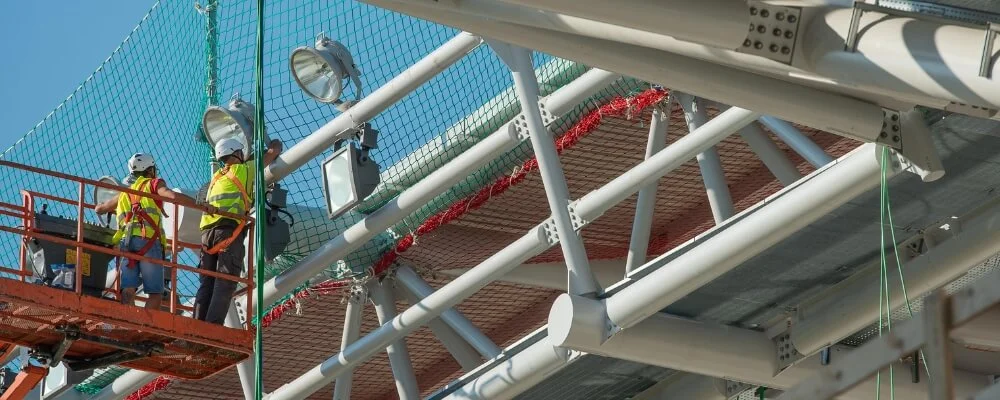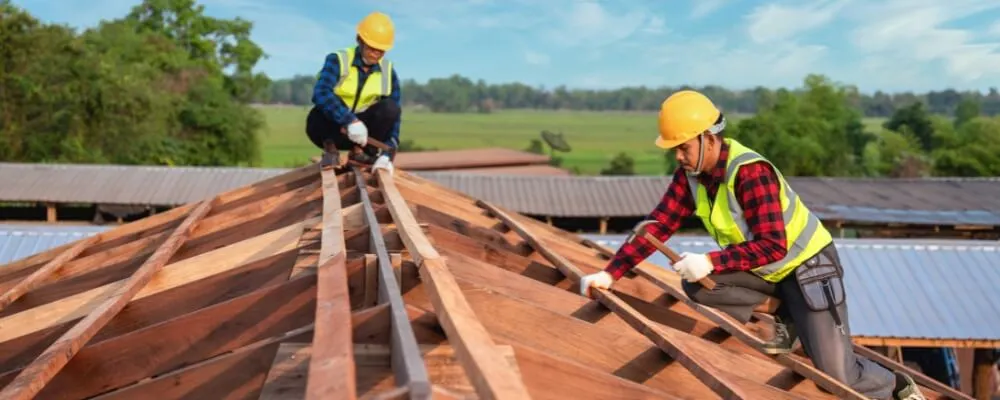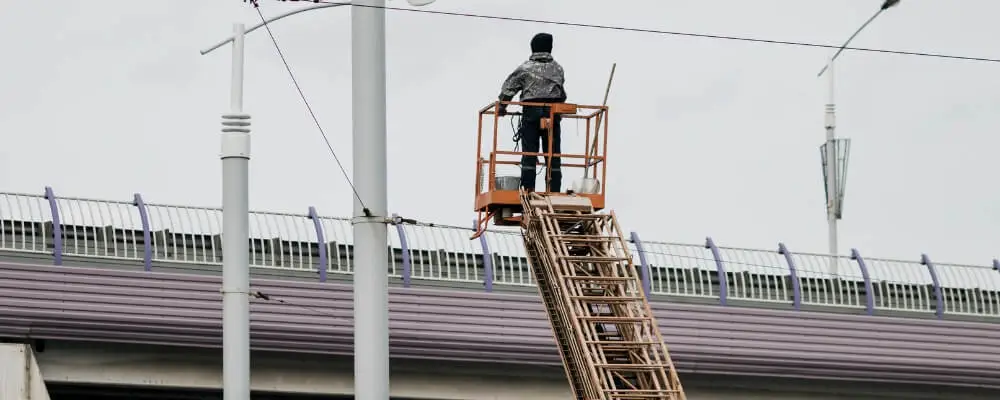In the realm of industries where tasks are routinely performed at elevated levels, such as construction and maintenance, the importance of stringent safety protocols is paramount. A Work at Height Toolbox Talk is a vital instrument in this context, serving as a conduit for informal yet focused discussions on the myriad of challenges, precautions, and safety measures inherent to working at elevated positions.
This blog explores 10 critical topics integral to these toolbox talks, encompassing areas like meticulous risk assessments, the imperative of proper training, and the significance of adhering to safety protocols. These discussions are crucial in cultivating a robust safety culture, enhancing awareness, fostering open communication, and reinforcing the importance of compliance and emergency preparedness, thereby contributing to the creation of a secure, efficient, and productive working environment.
Work At Height Toolbox Talk
A Work at Height Toolbox Talk is a focused, informal discussion that deals with the specific risks, precautions, and safety measures associated with working at elevated levels. It is a crucial component of occupational safety, especially in industries like construction, maintenance, and any other field where tasks are performed above ground level. The primary objective is to promote a safety culture and to ensure that every worker understands the inherent risks and the necessary precautions when working at height.

Importance of Work at Height Toolbox Talk:
- Enhances Safety Awareness: Toolbox talks raise awareness about the potential hazards and risks associated with working at height. They educate workers on the importance of using safety equipment and following safety protocols to prevent accidents and injuries.
- Promotes Open Communication: These talks provide a platform for workers to discuss their concerns, ask questions, and share their experiences and knowledge about working at height. This open communication fosters a collaborative environment where safety is prioritized.
- Reinforces Training: Toolbox talks serve as a reinforcement to formal training sessions, helping to keep safety procedures fresh in the minds of the workers. They help in addressing any gaps in knowledge and ensuring that workers are well-informed about the latest safety practices and regulations.
- Encourages Compliance: Regular discussions about safety standards and regulations ensure that workers understand the importance of compliance. It helps in creating a work environment where safety protocols are respected and followed diligently.
- Identifies and Mitigates Risks: Through discussions and interactions during toolbox talks, workers and supervisors can identify potential risks and hazards in the workplace. This proactive approach allows for the implementation of control measures to mitigate risks before they lead to accidents.
- Builds a Safety Culture: Consistent focus on safety through toolbox talks contributes to the development of a strong safety culture within the organization. It helps in instilling a sense of responsibility among workers to look out for their safety and the safety of their colleagues.
- Improves Emergency Preparedness: Discussing emergency procedures and evacuation plans during toolbox talks ensures that workers are well-prepared to respond effectively in case of an emergency. It helps in reducing panic and confusion during critical situations.
- Enhances Productivity: A safe working environment, where risks are minimized, contributes to higher productivity levels. Workers are more focused and efficient when they are confident about their safety.
Work at Height Toolbox Talks are vital in maintaining and enhancing workplace safety. They play a pivotal role in preventing accidents and injuries by fostering awareness, communication, and a strong safety culture within the organization.

10 Crucial Topics For Work At Height Toolbox Talk
A Toolbox Talk is a short, informal safety meeting focused on specific issues or topics related to the workplace or job site. When discussing work at height, it is crucial to address various topics to ensure the safety of the workers. Here are 10 crucial topics that can be covered in a Work at Height Toolbox Talk:
1. Risk Assessment
Conducting a thorough risk assessment is pivotal before initiating any work at height. This process involves a meticulous examination of the work environment to identify any potential hazards that could lead to accidents.
Once the hazards are identified, appropriate control measures are implemented to mitigate the risks. This proactive approach is essential in foreseeing and preventing potential accidents ensuring the safety of all workers involved in tasks at elevated positions.
2. Fall Protection Equipment
The utilization of fall protection equipment is crucial when working at height. This includes personal fall arrest systems, guardrails, and safety nets, which are designed to prevent falls and minimize injury in the event of a fall.
Regular inspection and maintenance of this equipment are imperative to ensure its effectiveness and reliability. Workers must be trained properly in the use of these systems to ensure their safety and the safety of their colleagues.
3. Ladder Safety
Ladders are commonly used for work at height, and their correct selection, positioning, and use are vital. It is essential to choose the right ladder for the task, position it correctly, and use it safely to prevent falls.
Regular inspections are necessary to identify any defects or damages that could compromise safety, and maintenance is required to keep ladders in good working condition. Workers must be educated on ladder safety to avoid mishaps and ensure a safe working environment.

4. Scaffold Safety
Scaffolds are integral for providing access to elevated work areas. Proper erection, alteration, and dismantling of scaffolds are crucial to maintain stability and safety. Regular inspections are essential to ensure the structural integrity of scaffolding components and to identify any potential hazards.
Maintenance is also necessary to rectify any identified issues promptly. Proper training and adherence to safety protocols are vital for preventing accidents related to scaffolds.
5. Edge Protection
Edge protection is essential to prevent falls from height, especially when working near the edges of elevated surfaces. It acts as a barrier to stop individuals and objects from falling. Regular inspection and maintenance of edge protection systems are crucial to ensure their effectiveness.
Workers must be made aware of the importance of using edge protection and should be trained on its proper use to maintain a safe working environment.
6. Training and Competence
Receiving proper training is indispensable before undertaking any work at height. This training ensures that workers are competent and fully aware of the risks associated with their tasks. It also equips them with the knowledge and skills necessary to perform their duties safely and efficiently.
A well-trained and competent workforce is instrumental in minimizing the risk of accidents and maintaining a high standard of safety in elevated work environments.
7. Emergency Procedures
Understanding and developing emergency rescue and evacuation procedures are vital when working at height. These procedures provide a clear and concise plan of action in the event of an emergency, enabling a swift and coordinated response.
Prompt reporting of incidents and near misses is also crucial as it allows for the identification and rectification of hazards, preventing future accidents. Workers must be trained in these procedures to ensure their safety and the safety of others in emergency situations.
8. Weather Conditions
Adverse weather conditions can significantly impact safety when working at height. Wind, rain, snow, and other weather elements can create hazardous conditions, increasing the risk of falls and accidents. It is essential to monitor weather conditions continuously and take necessary precautions, such as postponing work or using additional safety measures, during inclement weather.
Workers should be made aware of the impact of weather on safety and should be trained to recognize and mitigate weather-related risks.

9. Work at Height Permits
Obtaining the necessary permits is a prerequisite before starting work at height. These permits ensure that all safety protocols and regulations are adhered to and that the work is carried out safely.
They often outline the conditions and limitations of the work, ensuring that all safety measures are in place before commencement. Understanding and complying with the terms of work at height permits are essential for maintaining a safe and compliant work environment.
10. Housekeeping
Maintaining a clean and organized work area is fundamental to prevent slips, trips, and falls when working at height. Proper storage and disposal of materials and waste help in reducing clutter and eliminating hazards.
Good housekeeping practices are essential for creating a safe and efficient work environment, and workers should be educated on the importance of maintaining cleanliness and order in their work areas.
Conclusion
In conclusion, the essence of Work at Height Toolbox Talks cannot be overstated in industries where elevated tasks are commonplace. These focused discussions are pivotal in addressing the multifaceted aspects of safety, from risk assessments to emergency preparedness, ensuring that every worker is equipped with the knowledge and awareness to navigate the inherent risks effectively.
The exploration of these 10 crucial topics within toolbox talks serves as a foundation for fostering a resilient safety culture, promoting diligent compliance, and facilitating open communication within the organization. By prioritizing these discussions, organizations not only safeguard the well-being of their employees but also enhance overall productivity by establishing a work environment that is harmonious, secure, and conducive to optimal operational efficiency.
The cumulative impact of addressing these topics is profound, paving the way for a safer, more informed, and more resilient workforce in the face of the challenges associated with working at height.

